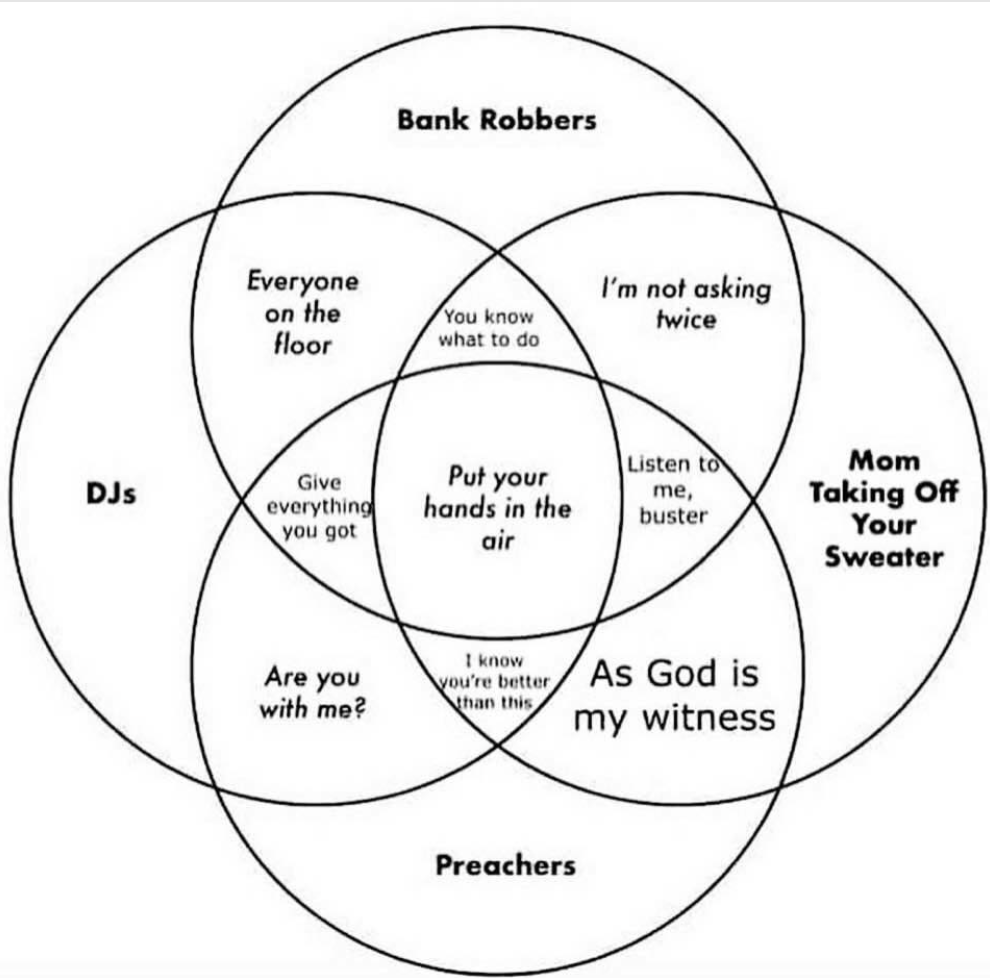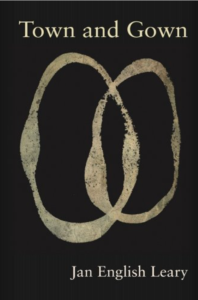I had the idea for this post when I was listening to Kamala Harris' guest appearance on We Can Do Hard Things with Glennon Doyle. The Vice President said, among other great lines, that she loves a good Venn diagram because it shows what we have in common. I stopped my stroll, sent myself the podcast link, and made a note to write about how much and why I agree with her.
When I got home, I Googled "best Venn diagram" and found the above gem on Motherwell Magazine's FB page. The humor in the image above comes from seeing commonalities among elements we don't usually clump.
But more important than humor, we need to find common ground in our ways of seeing the world. Most of us like to think that we're not solipsistic, narcissistic, and myopic, but when push comes to shove, we think about ourselves first, love ourselves most, and understand our own views best. I'd posit that the fastest cure for these natural human characteristics is to seek common ground with others. We are less likely to dislike people who share our values than people we see as standing for what we detest. We are less likely to show disrespect for people whose views align with our own. We are less likely to scorn those who we see as mirrors of ourselves.
By framing whatever and whomever we encounter in Venn diagrams, we assume the common ground and know that the task we share is to fill in the overlaps. We know we have to search for ways to unite and align rather than separate and malign. Rather than putting each other in our cross hairs, we can embrace each other in our hugs. I see Venn diagrams as a way to save the world from either-or thinking. It's not true that either you're with me or you're against me; instead, we acknowledge that even though we don't agree on X, we see Y the same way. And from Y, we can build to Z and other great places we'll experience together.
Isn't this a better way to view the world than without the glory of the Venn diagram. Kamala Harris and I are in the overlap on this one. Please come join us here. Then, feel free to share your observations in the comments.
Postscript: I wrote the post above a while ago and am reviewing it just before it publishes. Between then and now, I read a book with my Noble readers (Hi, Readers!) called Town and Gown, which follows two girls/women who grow up in a college town, one the daughter of a professor and the other a farmer's child. The book's cover, pictured below, is a Venn Diagram of sorts painted by the author's husband. Both the author and her husband taught for many years at my alma mater in Chicago. Pretty cool stuff.


Sometimes new beliefs change behavior, sometimes new behaviors change beliefs, and sometimes nothing seems to change—at least in the focal time period. Working with a diverse other sometimes shrinks prior stereotypes, especially if the work project goes well. Same for living nearby and decently interacting with. Although sometimes the stereotype is strong and broad, and the nearby other seen as a rare exception.
I agree with all of that. I guess I wasn’t trying to express a hard-and-fast, universal truth as much as a general idea.